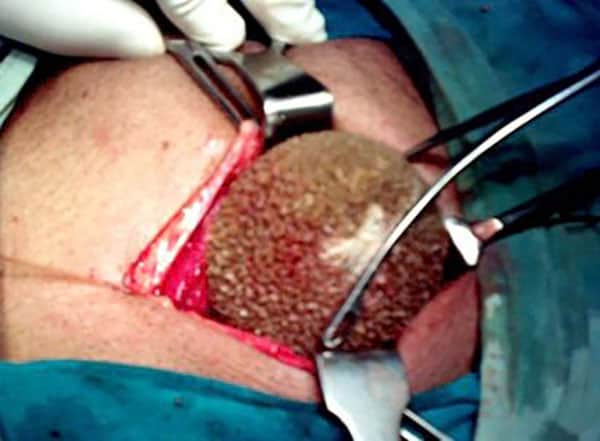What does this procedure involve?
Cystolithotomy is an open procedure for the removal of Bladder Stones. This procedure involves removal of a bladder stone via a cut (approximately 10cm) in the lower abdomen. Most bladder stones can be dealt with by an endoscopic (telescope) procedure, to avoid the need for a surgical incision. If stones are very large, it is often best to perform an open operation. These options will be discussed with you before surgery.
Stones form in the bladder for a variety of reasons. In men, the most common cause is bladder outflow obstruction from an enlarged prostate.
What should I expect before the procedure?
You will usually be admitted on the same day as your surgery.
You will be asked not to eat and drink for six hours before surgery. Immediately before the operation, the anaesthetist may give you a pre-medication, which will make you dry-mouthed and pleasantly sleepy.
Please tell your surgeon (before your surgery) if you have any of the following:
- An artificial heart valve.
- A coronary artery stent.
- A heart pacemaker or defibrillator.
- An artificial joint.
- An artificial blood-vessel graft.
- A neurosurgical shunt.
- Any other implanted foreign body.
- A regular prescription for a blood thinner e.g. Warfarin, Coumadin Xarelto®, Pradaxa®, Clopidogrel (Plavix®), Brilinta®, or Aspirin.
- Previous or current infection with an antibiotic resistant organism such as MRSA, VRE, etc.
What happens during the procedure?

Either a full general anaesthetic (where you will be asleep) or a spinal anaesthetic (where you are unable to feel anything from the waist down) will be used. All methods minimise pain. Your anaesthetist will explain the pros and cons of each type of anaesthetic to you. You will usually be given injectable antibiotics before the procedure, after checking for any allergies
The first step is a cystoscopy. Once the bladder has been examined, an incision is made in the lower abdomen to access the bladder. The bladder is opened and the stone removed.
The bladder is closed in a watertight manner with an absorbable suture, and a catheter is inserted into the bladder though the urethra. A separate drainage tube may out through your abdomen next to the incision.
After the operation
Most patients will stay in for a few nights after the operation. The catheter will remain in place for 7-14 days, depending on the size of the incision in the bladder. You will be discharged when fit, and will be advised to rest at home until you come back in for removal of the catheter. Specific advice will be given on discharge.
Potential side effects and complications
All procedures have the potential for side effects. Although these complications are well recognised, the majority of patients do not have problems after a procedure.
There are specific risks with this surgical procedure, and these will be discussed with you before your procedure. As a guide to complement that one-on-one discussion with your surgeon, these include:
Common
- A burning sensation and / or a small amount of blood in the urine for a short period afterwards.
Occasional
- Infection of the bladder requiring antibiotics.
- The need for a longer period with the catheter.
- Infection in the surgical incision.
Rare
- Temporary insertion of a new catheter if you are unable to pass urine immediately after the first one is removed.
- Delayed bleeding requiring removal of clots or further surgery.
- Injury to the urethra causing delayed scar formation.
- Fever and more serious infection requiring a longer hospital stay.
- Delayed healing of the bladder, or a leak from the bladder, which requires a further procedure or a prolonged period with a catheter.
If you develop a fever, severe pain on passing urine, inability to pass urine or worsening bleeding, you should contact the practice immediately. If out of hours, please go to your nearest emergency department.
Disclaimer
This information is intended as a general educational guide and may not apply to your situation. You must not rely on this information as an alternative to consultation with your urologist or other health professional.
Not all potential complications are listed, and you must talk to your urologist about the complications specific to your situation.
